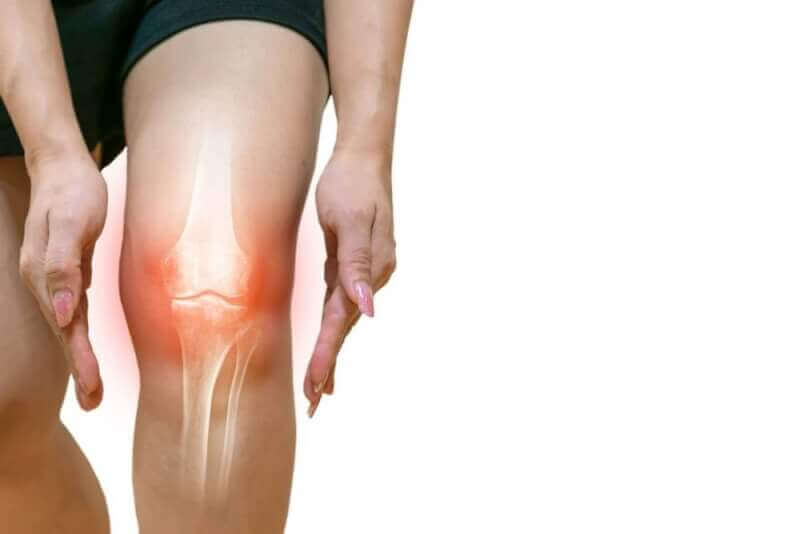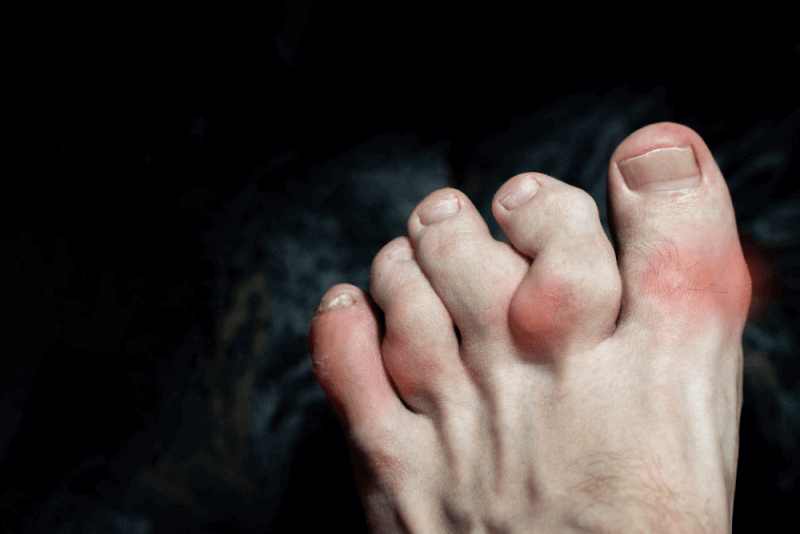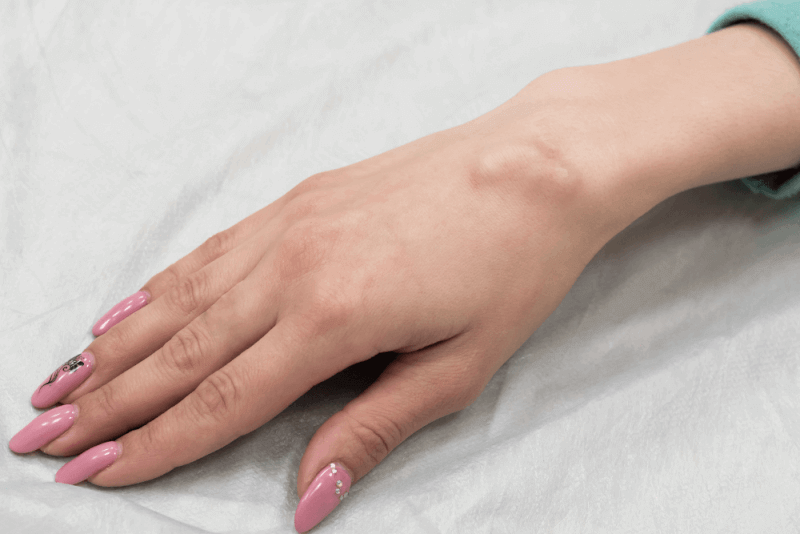What is an aneurysmal bone cyst?
Aneurysmal bone cysts, usually seen in children between the ages of 5 and 15, tend to recur. Aneurysmal bone cysts can occur in any joint and are most common in the spine, pelvis and knee joints. Benign aneurysmal bone cysts tend to grow and expand and the lesions are filled with blood.
Aneurysmal bone cyst, which is more common in men than in women, shows a rapid growth. Therefore, it should be treated as soon as possible. Aneurysmal bone cysts can occur spontaneously or, in some cases, as a secondary reaction to bone growth anywhere in the body. In addition, studies have shown a high incidence of concomitant tumors in approximately one third of patients. Although aneurysmal bone cysts are benign tumors, they cause thinning of the bone as they develop inside the bone.
Symptoms of aneurysmal bone cyst
The most characteristic feature of aneurysmal bone cysts is pain. These cysts, which cause thinning of bone tissue, can cause severe pain due to tissue failure. In the early stages of the disease, the pain is not pronounced. However, in the future, especially if the bones are broken, the pain may become severe and in some cases permanent. Therefore, in the case of a bone fracture, it is extremely important to determine whether the fracture was caused by trauma or by a cyst.
In addition, the symptoms of aneurysmal bone cyst include the following:
- Decreasing range of motion
- Weakness
- Hardness
- Feeling of warmth over the affected area
- Deformities in the growth area
- Inflatable
Which bones are affected by an aneurysmal bone cyst?
Aneurysmal bone cysts are usually seen in long bones. These bones include the femur (thigh bone), tibia (shin bone) and humerus (arm bone).
In addition, aneurysmal bone cysts are rarely seen in small bones. These include the bones of the hands and feet. More rarely, it is also seen in bones such as the spine, pelvis and ribs.
In addition, aneurysmal bone cysts are usually seen in a single bone. However, in some cases it can be seen in more than one bone.
Aneurysmal bone cyst in the spine
Aneurysmal bone cyst in the spine is a rare condition. In these patients, the lesion is seen especially in the lumbar or thoracic region. Aneurysmal bone cysts in the spine do not cause any symptoms. It is therefore discovered by chance. In addition, symptoms such as nerve compression and pain may occur because the enlargement of the lesion may cause pressure on the nerves in the spinal cord.
What are the symptoms of vertebral fracture due to an aneurysmal bone cyst?
If an aneurysmal bone cyst develops on the spine, it can weaken and fracture the bones. The symptoms caused by this condition are as follows:
- Severe back pain, especially at the top of the broken bone
- Restriction of movements of the spine
- Tenderness in the spine area
- Increasing pain in the spine area
- Nerve symptoms such as numbness, weakness or tingling in the legs due to pressure on the nerves in the spine
- Deformities in the back, lower back and neck resulting from the fracture
- Breathing difficulties
- Cough
- Difficulty breathing
Characteristics of aneurysmal bone cyst
It is possible to list the characteristics of aneurysmal bone cysts as follows:
- Although aneurysmal bone cysts are called tumors, they are not true cysts. Instead, they are described as an aggressive lesion.
- Although cysts are seen alone in 70% of patients, in 30% of patients they may be associated with giant cell tumors.
- Pelvic localization is rare. However, in approximately 20% of patients it involves the posterior part of the spinal bones.
- It is detected on X-rays as a lytic lesion that enlarges and thins the outer part of the bone.
- Usually located away from the center
- Bone destruction can be seen more clearly on MRI images.
- Soft tissue involvement is rarely seen.
- The chance of recurrence varies between 14% and 34% and the recurrence period is 2 years.
Causes of aneurysmal bone cyst
The causes of aneurysmal bone cysts are not known exactly. However, since it is more common in boys than girls, it is thought to be caused by frequent traumas.
Treatment of aneurysmal bone cyst
In the treatment of an aneurysmal bone cyst, the bone where the lesion is located and the damage to the bone should be evaluated. The treatment plan is then implemented according to these criteria.
Aneurysmal bone cyst surgery
Surgical operation is the most preferred method in the treatment of aneurysmal bone cyst. It is especially preferred if the lesion is in a position where it can be completely removed. The biggest disadvantage of this method is the possibility of tumor cells remaining in the bone. These cells can therefore cause aneurysmal bone cysts to form again.
After surgical removal of the aneurysmal bone cyst, cement or graft application is performed. These fillers provide mechanical strengthening of the bone as well as preventing the re-formation of the lesion. Due to the high possibility of recurrence, cautery, burr, alcohol or phenol application is recommended for patients afterwards. In addition, because the lesions are filled with blood, the main vessels feeding the cyst may need to be blocked by angioplasty.
In addition, if the lesion occurs in small bones, the bone may need to be completely removed surgically. It is also used in cases where the bone has been severely damaged. In this case, patients receive bone transplants from cadavers.
Liquid nitrogen therapy
Liquid nitrogen therapy is used to prevent recurrence of the disease. For this reason, it is usually applied after the surgical procedure. This method uses substances such as alcohol, liquid nitrogen or phenol. These substances are effective in destroying invisible tumor cells.
The liquid nitrogen used in this treatment method is sprayed on the lesion area. This process freezes the tissues at -1800 degrees Celsius. It is then quickly brought to normal temperature. This temperature difference allows the tumor cells to disintegrate and disappear.
Radiotherapy
Radiotherapy is rarely used in the treatment of aneurysmal bone cysts. This is because radiotherapy has a low success rate. In addition, the fact that it has many different side effects is among the reasons why radiotherapy is not preferred.
In addition, radiotherapy is used in the treatment of aneurysmal bone cysts to reduce the size of the cyst and alleviate the symptoms it causes. For this reason, it can be applied in certain cases.
RF Ablation
Another method used in the treatment of aneurysmal bone cyst is RF ablation. This method uses high frequency electromagnetic energy. Thanks to this energy, the fluid inside the cyst is vaporized and the cyst wall is destroyed.
This process uses a special device. A small incision is made in the skin for the procedure. The needle of the device is then advanced into the cyst and inserted into the cyst. In this way, energy is applied to the cyst.
RF ablation is considered to be the most reliable method in the treatment of aneurysmal bone cysts. However, the size and location of the cyst are important for this treatment to be applied. The general health status of the patient is also important in planning the treatment.
Diagnostic criteria for aneurysmal bone cyst
The most important factors in the diagnosis of aneurysmal bone cyst are the patient’s age and complaints. It is possible to see some enlargement of the bones in the radiographs taken upon the complaints of the patients. However, in the early stages of the disease, these enlargements may not be visible. For this reason, other diagnostic methods should be used.
MRI imaging is the best method to determine the exact cause of the complaints or bone fracture. In this way, edema, bone damage, the appearance of cysts inside the bone and bone destruction can be clearly visualized. A CT scan may be needed to get clearer images.
After the identification of the aneurysmal bone cyst, the tumor should be examined with an interdisciplinary approach. These disciplines include pathology, orthopedics, radiology and oncology.
In order to make a definitive diagnosis of an aneurysmal bone cyst, a biopsy must be performed. For this, special biopsy needles are used under light sedation. Treatment is mandatory as soon as possible after diagnosis of an aneurysmal bone cyst. Because an aneurysmal bone cyst is an aggressive disease.
Aneurysmal bone cysts can be diagnosed by pathological examination. In pathological examination, the tissues are examined under a microscope. Within this review process, the following findings are emphasized.
- The most characteristic feature of an aneurysmal bone cyst is bleeding. For this reason, it causes the formation of dark colored areas inside the cyst on microscopic examination.
- One of the characteristics of an aneurysmal bone cyst is the presence of a type of connective tissue called fibrous. This connective tissue forms the wall of the cyst.
- Microscopic examination also looks for the presence of infection. This is because the bone cyst is in contact with bone tissue and this contact causes inflammation of the tissue.
- After bleeding in an aneurysmal bone cyst, iron accumulates in the cyst and this is called hemosiderin.
- Finally, microscopy is used to look for the presence of rieske cells. Although it is a rare finding, it causes the characteristics of the cells in the cyst to change. For this reason, the cells in the cyst increase more rapidly. This causes the cyst to grow rapidly.
What is hydatid cyst mimicking an aneurysmal bone cyst?
Hydatid cyst is a parasite infection. Although its primary host is dogs, it is also seen in humans. Although it is usually an infection of the lungs and liver, it can also be seen in the bones in 4% of cases. If it is located in the bones, it is usually seen in the spine. Because of these features of hydatid cyst, it perfectly mimics the aneurysmal bone cyst. This mimicry is particularly indistinguishable by imaging methods.









